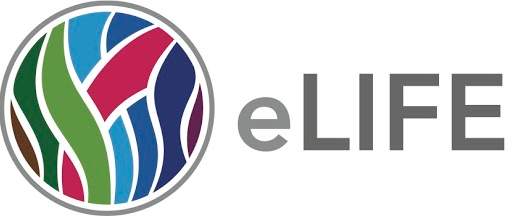eLife: open-access publishing of outstanding research in the life sciences and biomedicine
23/06/2016


eLife open-access scientific journal publishes outstanding research in the life sciences and biomedicine, from the most fundamental and theoretical work, through to translational, applied, and clinical research.
“Exploring new ways to evaluate and publish great science is at the heart of what we do at eLife. We are particularly interested in how new technologies can help and have recently achieved a significant landmark that we hope will help us, and others, improve how science is published online”.( eLife)
E-Life: aims and scope
eLife is a peer-reviewed open-access scientific journal - launched in 2012 - for the biomedical and life sciences. eLife is supported by the Welcome Trust, the Max-Planck Society and the Howards Hughes Medical Institute, and is one of the members of OASPA.
In 2016 the support organizations committed USD$26 million to continue speeding up the process for publishing eLife open-access articles in the following research domains:
|
Biophysics and Structural Biology
|
||
|
Computational and Systems Biology
|
||
|
Epidemiology and Global Health
|
||
|
Genomics and Evolutionary Biology
|
||
The open-access eLife journal was the first step in eLife’s mission to help scientists accelerate discovery by operating a platform for research communication that encourages and recognizes the most responsible behaviours in science. The Executive Director of eLife, Mark Patterson, has provided some additional commentary on how the organisation has met and is continuing to meet this goal thanks to the support from its funders.
Terms of use and outreach
All published results (there are no costs for submitting and publishing!) are available free and immediately to a worldwide audience, – including students, colleagues in other fields, and the public – through Impact statements, shared plain-language summaries (eLife Digests shared on the blog publishing platform Medium), and selected expert commentaries (eLife Insights).
Everyone has the right to use the results without restriction (using a Creative Commons Attribution license). That means, that citing, downloading, re-using, reproducing, re-purposing, and building on material published in eLife can be done without requesting permission from the authors or the publisher, provided full attribution to the authors is given.
eLife also deposits all content into PubMed Central, as well as sites such as Mendeley, scribd, and Github, and article data are made openly available also through an API. Moreover, eLife papers get great media coverage in venues like the New York Times and National Geographic.
The eLife Podcast is produced by BBC Radio presenter and Cambridge University consultant virologist Dr Chris Smith, who also leads and founded the popular science radio programme, website and podcast The Naked Scientists.
eLife Labs section provides access to:
- eLife Labs showcases experiments in new functionality and technologies. Some experiments may be developed further to become features on the eLife platform;
- eLife Lens Writer for creating an online scientific authoring tool;
- Manuscripts 1.0 tool helping authors create a paper, complete with figures, tables, equations and a formatted bibliography, ready to be published;
- Binder website and collection of open-source tools for building and executing reproducible computational environments;
- The International Image Interoperability Framework (IIIF) for science publishers.
Peer review policy
eLife Senior editors decide within a few days if a submission is appropriate for in-depth peer review, and assign a member of the Board of Reviewing Editors to oversee the review process if so.
The Reviewing editors review the article him or herself, alongside one or two additional external reviewers. The reviewers discuss their individual recommendations online, communicating openly with one another before a decision is reached. While asking for revisions, the Reviewing editor incorporates those requirements into a single set of instructions.
If the article is rejected after peer review, the full reviews are usually included along with the reasons for rejection. Further rounds of revision are largely eliminated.
When an article is published, eLife also posts the most substantive parts of the decision letter and the author responses, subject to author agreement.
eLife will not promote the Impact Factor
eLife claims that it will not promote its impact factor but rather its research works by providing quantitative and qualitative indicators about their reach and influence. eLife is working to expand and enrich the concept of research impact beyond the use of a single number and a journal name.
ELIFE supports early career scientists
To support job, tenure and funding applications, the eLife Senior editor who handles your paper will be ready to write a letter of recommendation that describes the significance of your article.
Working on something interesting?
If you've got something interesting that could be a good fit for eLife, please contact eLife. eLife is looking for work (full-length studies and short reports, 1,500 words or less) that could be highly influential, has potential to drive a field forward, or could have outcomes for the real world.
Source: eLIFEsciences.org
See also:
eLife introduces Continuum, a new open-source tool for publishing
HHMI, the Max Planck Society and the Wellcome Trust have extended their funding for eLife
OASPA.org: Open Access Scholarly Publishers Association
